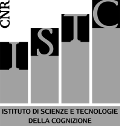Synopsis
Authors: Vieri Santucci, Daniele Caligiore, Magda Mustile, Marco Mirolli, Gianluca Baldassarre
Topic and its relevance. Intrinsic motivations (IMs) are related to curisity, exploration, the interest for novel objects and surprising evens, and the drive to learn motor skill. IMs operate in the absence of a direct biological pressure and feedback (as in the case of extrinsic motivations, i.e. the classic motivations related to homeostatic regulations and survival). IMs are a fundametnal topic of investigation as they play a key role in human well being, art, science, and technology. They are also important for autonomous robotics as they allow the construction of cumulative learning robots.
Questions and goals. What is the overall biological function of IMs? What are the specific cognitive functions of IMs? What are the different types of IM mechanisms? How do IMs guide other cognitive processes to accomplish open-ended learning?
Methods. We investigate these issues not only with models (see below) but also with a theoretical approach and empirical experiments. The reason is that there is still not an agreement on the issues above and so an integrated vision of IMs can furnish an overall framework within which to study them in detail.
Results. We have proposed the general and specific biological functions of IMs relying on existing computational, psychological and neuroscientific views and evidence on them. Building on previous proposals, we have also articulated the taxonomies of IM mechanisms into: novelty-based IMs, prediction-based IMs, and competence-based IMs. We have linked these types of IMs to open-ended learning proceses in specific ways.
Conclusions. IMs are an important phenomenon maximally expressed in humans. These research thread is contributing to clarify the nature and mechanisms of IMs so as to furnish a framework usable to study specific problems on them with different disciplinary and interdisciplinary approaches.
Key references.
- Caligiore D., Mustile M., Cipriani D., Redgrave P., Triesch J., Baldassarre G. (2015). Intrinsic Motivations Drive Learning of Eye Movements: An Experiment with Human Adults. PLoS ONE 10(3): e0118705. doi: 10.1371/journal.pone.0118705
- Mirolli M., Santucci V. G., Baldassarre G. Phasic dopamine as a prediction error of intrinsic and extrinsic reinforcement driving both action acquisition and reward maximization: A simulated robotic study. In: Neural Networks, vol. 39 pp. 40 - 51. Elsevier Ltd, 2013
- Santucci V. G., Baldassarre G., Mirolli M. Which is the best intrinsic motivation signal for learning multiple skills?. In: Frontiers in Neurorobotics, vol. 7 pp. e1 - 14. Frontiers, 2013.
- Baldassarre G., Mirolli M. Deciding which skill to learn when: Temporal-Difference Competence-Based Intrinsic Motivation (TD-CB-IM). In: Intrinsically Motivated Learning in Natural and Artificial Systems. pp. 257 - 278. G. Baldassarre, M. Mirolli (eds.). Berlin: Springer, 2013.
- Mirolli M., Baldassarre G. Functions and mechanisms of intrinsic motivations: the knowledge versus competence distinction. In: Intrinsically Motivated Learning in Natural and Artificial Systems. pp. 49 - 72. G. Baldassarre, M. Mirolli (eds.). Berlin: Springer-Verlag, 2013.
- Taffoni F., Formica D., Schiavone G., Scorcia M., Tomassetti A., Polizzi Di Sorrentino E., Sabbatini G., Truppa V., Mirolli M., Baldassarre G., Visalberghi E., Keller F., Guglielmelli E. The "Mechatronic Board": a tool to study intrisic motivation in humans, monkeys, and humanoid robots. In: Intrinsically Motivated Learning in Natural and Artificial Systems. pp. 411 - 432. G. Baldassarre, M. Mirolli (eds.). Berlin: Springer, 2013.

